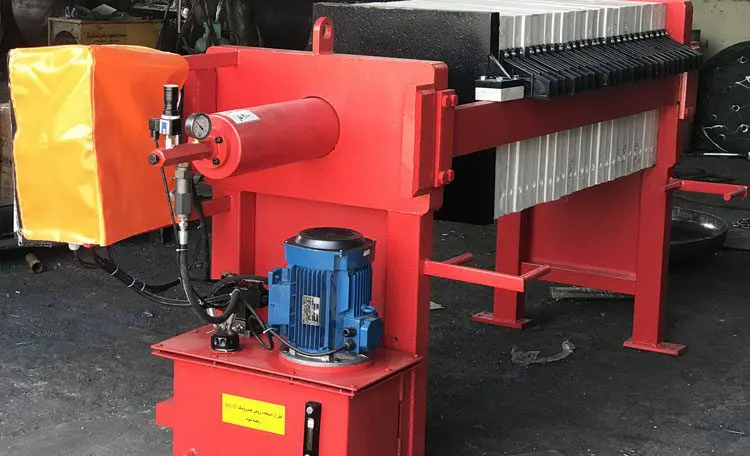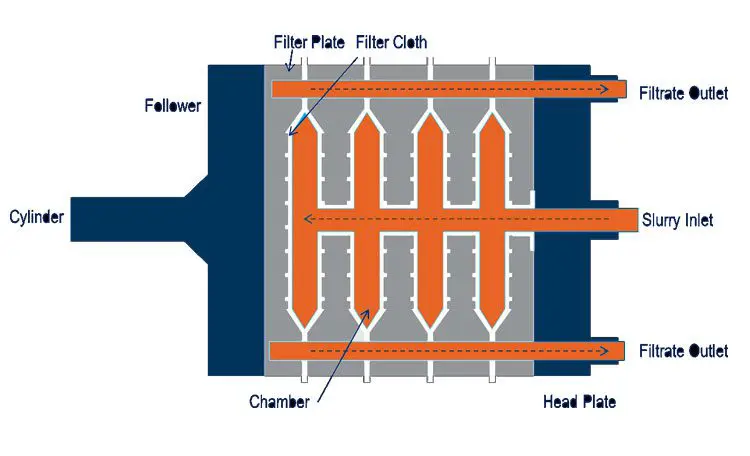Press filter design
In designing the filter press, it is necessary to consider various factors, such as the material used in the production of its various parts. In the design of filter press, several main components and parts are considered, which are:
· System plates, which are often made of polypropylene and are resistant to contact with chemicals in the wastewater and do not cause corrosion.
· The fabric is placed on the plates which should have good resistance against rot, corrosion and tearing. For this reason, they are often made of cotton, linen and polyamide.
· Highly durable chassis for stacking the plates together
· Pump to enter sewage and fluid into the device and remove them after treatment
· Hydraulic jack to compress the plates and open them after finishing the filtration process
· Fabric plate washing system periodically
· Cake drain system and transfer it out of the machine
In addition to the proper selection of parts and components of the device, it is necessary to determine the dimensions and size of the device according to the amount of wastewater entering the device and the type of organic matter in them. There are many standards for the design of each part of this machine, the observance of which ultimately leads to the production of the best type of filter press systems with high efficiency and good service life.
Making filter presses
Haft Industrial Group, as one of the most experienced design and production teams and manufacturers of water and wastewater treatment equipment, has included the production of filter press systems in its activities. To date, this collection has succeeded in producing and manufacturing filter presses for domestic and foreign industrial and semi-industrial environments and designs each product according to the required features in their place of use. For information about the features of Filter press systems produced by this collection, you can contact the experts of Haft Industrial Group. The experts of this collection, who are all professional and experienced engineers in this field, are ready to provide advice and guidance and provide information about the price of filter presses and other required information before purchasing filter presses.







Leave a Reply